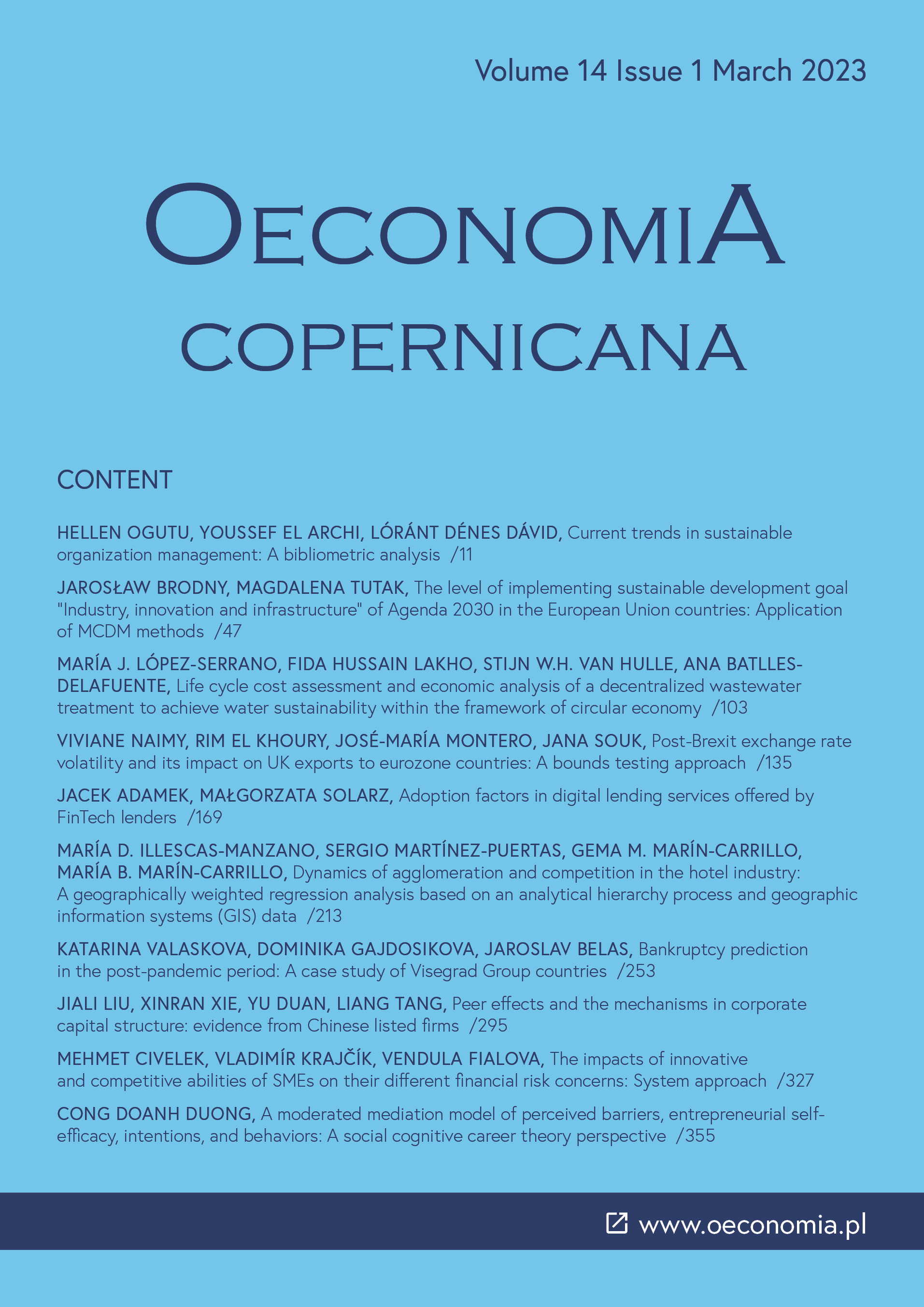Post-Brexit exchange rate volatility and its impact on UK exports to eurozone countries: A bounds testing approach
Post-Brexit exchange rate volatility and its impact on UK exports to eurozone countries: A bounds testing approach
Author(s): Viviane Naimy, Rim El Khoury, José-María Montero, Jana SoukSubject(s): National Economy, Supranational / Global Economy, International relations/trade, EU-Accession / EU-DEvelopment
Published by: Instytut Badań Gospodarczych
Keywords: exchange rate volatility; exports; Brexit; ARDL; GARCH;
Summary/Abstract: Research background: The Brexit referendum had a profound effect on the economic relations between the United Kingdom (UK) and continental Europe. Major economic and financial determinants were affected, including the impact of the GBP/EUR exchange rate volatility on the dynamics of UK exports to the Eurozone.Purpose of the article: This paper seeks to assess the extent to which these dynamics have changed since Brexit and to estimate the magnitude of their impact.Methods: To this end, the volatility behavior of the GBP/EUR exchange rate before and after Brexit is captured using EWMA, GARCH(p,q), and EGARCH(p,q) models for the period of January 1, 2010 to August 31, 2020. The post-Brexit change in the volatility structure of GBP/EUR exchange rates is then tested by including a dummy in the optimal volatility model. Finally, the Autoregressive Distributed Lag (ARDL) Bounds Testing approach is employed to analyze the relationships between exchange rate volatility and exports.Findings & value added: GARCH(1,1) was selected as the winning model and used to examine the volatility structure of the post-Brexit exchange rate, which revealed no significant change. By incorporating a well-grounded proxy for exchange rate volatility into the demand function of exports, and controlling for the industrial production index, terms of trade, and real exchange rate, the analysis showed that exchange rate volatility had a negative impact on export volume to the Eurozone in both the long and short run. Additionally, the industrial production index had a positive effect on export volume in both the long and short run, while an appreciation in the value of the pound relative to the euro adversely affected the competitiveness of UK exports in the Eurozone market in the long run, with no impact in the short run. This paper serves as a benchmark for future studies, as it follows a three-step modeling approach and provides valuable insights into the potential economic and financial consequences a European Union (EU) member state may face should it choose to exit the EU.
Journal: Oeconomia Copernicana
- Issue Year: 14/2023
- Issue No: 1
- Page Range: 135-168
- Page Count: 34
- Language: English

